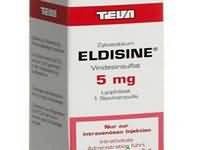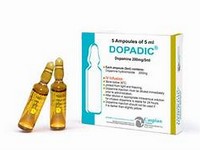vindesine sulphate

CLINICAL USE
Antineoplastic agentDOSE IN NORMAL RENAL FUNCTION
3–4 mg/m2 weeklyPHARMACOKINETICS
DOSE IN RENAL IMPAIRMENT
GFR (mL/MIN)
DOSE IN PATIENTS UNDERGOING RENAL REPLACEMENT THERAPIES
IMPORTANT DRUG INTERACTIONS
Potentially hazardous interactions with other drugsADMINISTRATION
Reconstition
5 mL sodium chloride 0.9% per 5 mg vialRoute
IVRate of Administration
1–3 minutesComments
Can be injected into the tubing of a fast running infusion of sodium chloride 0.9%, glucose 5% or glucose/saline solutions, or directly into a vein Reconstituted solution is stable for 24 hours if stored in a fridgeOTHER INFORMATION
Nadir of the WCC occurs 3–5 days after dose with recovery after another 4–5 days Metabolised by cytochrome P450 (in the CYP 3A subfamily). Elimination is primarily biliary (13% excreted in urine in 24 hrs) Vindesine sulphate .
See how to identify renal failure stages according to GFR calculation
See how to diagnose irreversible renal disease
Home








